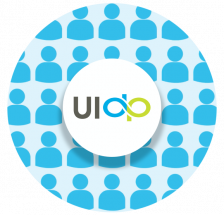Beyond Sponsored Research Funding: Pathways for U-I Partnerships
April 30, 2024 —Cross-sector research partnerships come in many shapes and sizes. Sponsored research is a common way to collaborate, but when budgets tighten and collaborative research is put on hold, there are low-cost and even non-financial approaches that provide enormous benefit for both parties while keeping relationships strong.
—Cross-sector research partnerships come in many shapes and sizes. Sponsored research is a common way to collaborate, but when budgets tighten and collaborative research is put on hold, there are low-cost and even non-financial approaches that provide enormous benefit for both parties while keeping relationships strong.
Asset access
In UIDP’s Partnership Continuum, several facets of partnership are outlined at varying levels of engagement, including access to resources. Companies and universities have unique resources that can benefit their partners, and combining or sharing these resources can move collaborations forward. At lower engagement levels, resource access may include using a fee-for-service core lab or enabling access to libraries and information technology systems. At higher levels, resource access may include the physical co-location of research groups.
There are also research-enabling assets, such as biological materials, assays, or data sets. Collaborating on shared platforms can facilitate the exchange of research data, methodologies, and findings, which can be beneficial to both parties. Additionally, academic researchers may seek access to intellectual property unique to companies. Unique research equipment and spaces can be made available to partners in both academia and industry, though sometimes universities charge companies to run samples using their equipment.
Researcher and student engagement
Engaging directly with researchers or students can also help facilitate partnerships, and both companies and universities can interact directly with researchers from their partner organizations. Industry can make an important contribution by working with academic partners on joint proposals for government funding, or by serving on red team review boards for academic teams seeking grant funding. Industry researchers can consult for a partner university’s academic research projects. Sabbaticals can help support researchers in different settings and enable them to learn new techniques and perspectives that will help strengthen research capabilities at their home organizations. Serving on Ph.D. or other committees or boards also offers an opportunity for researchers to maintain connections to partner organizations as well as stay up to date on current research developments or trends. Researchers can also present their work to their counterparts at partner organizations, exchanging findings and ideas while raising awareness of current initiatives and projects.
Researchers presenting their accomplishments—especially at universities—may also pave the way for another important non-financial aspect of research partnership: recruitment and student engagement. Student engagement brings benefits to both partners. Producing highly skilled and successful students keeps universities competitive. And when students gain experience in industry, it helps companies reach their research goals. Students learn to apply their knowledge in a real-world setting while expanding their career network and employment potential.
When financial resources are constrained, companies may be able to lend expertise to shape curricula to align with industry needs. With a small investment, companies can lend faculty to teach a field-specific course or sponsor co-ops and research topics, engaging directly with students to solve problems and benefit the company.
Company representatives can also remain visible on campus through presentations and seminars, career fairs, or other events designed to make connections with students and create pathways for potential new employees.
Why it matters
With a dynamic economy and shifting funding landscape, periods of fiscal tightness are inevitable. That doesn’t mean research partnerships push the pause button. Understanding ways to support existing partnerships and foster new collaborations without a large financial investment can keep the relationship strong. See UIDP’s Partnership Continuum for even more ways to partner that best fit your organization’s current situation.
We want to hear from you. What are some non-financial ways your organization partners for research? Let us know on our LinkedIn profile.


